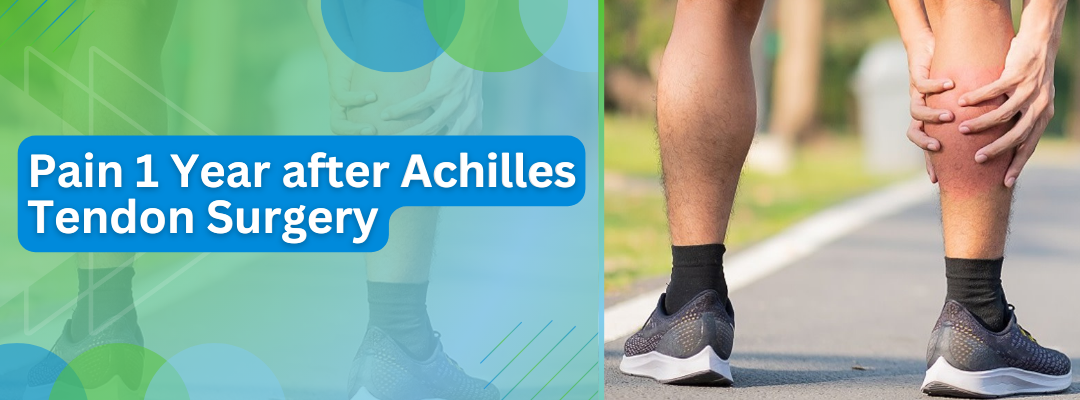Experiencing pain 1 year after Achilles tendon surgery can be both concerning and confusing for patients expecting a full recovery. Understanding your pain’s nature and its potential causes is crucial. It is important knowing the difference as well.
Are you seeking pain management strategies? Or, are you wondering if your symptoms are normal? Our overview offers the clarity and direction you need for a smoother recovery.
Dr. Leena Jain is a top plastic surgeon in Bandra, known for her expert care in treating achilles tendon surgery. She uses the latest techniques to get the best results for her patients. Dr. Jain’s approach is all about personal care and using proven methods. She’s highly respected for changing her patients’ lives by improving their confidence and function.
Reduce your Achilles pain! Learn from Leena Jain’s journey and expert insights from Dr. Jain. Book an appointment.
Want to know more about what happens 1 year after achilles tendon surgery? Keep reading to find out!
Understanding Pain 1 Year After Achilles Tendon Surgery
Pain after Achilles tendon surgery is not uncommon, but it should ideally go away over time. By the one-year mark, most patients expect significant improvement and return to normal activities. However, some individuals may still experience pain, which could be due to several factors including the natural healing process, rehabilitation effectiveness, and individual health conditions.
Curious about the different types of pain you might be experiencing? Let’s know more together.
Causes and Types of Pain One Can Experience
- Mild Discomfort: A common feeling that might not hinder daily activities but is noticeable.
- Moderate Pain: This can affect daily activities and might indicate slow or problematic healing.
- Severe Pain: Intense enough to limit movement and daily functions, possibly signaling reinjury or other serious issues.
- Incomplete Healing: The tendon hasn’t fully recovered, leading to continued pain.
- Scar Tissue Formation: Scar tissue can cause stiffness and discomfort, affecting the tendon’s flexibility.
- Reinjury: Returning to activities too soon or accidents leading to re-damaging the tendon.
- Identifying Pain Triggers: Understanding what activities or movements exacerbate the pain is key to managing it.
- Preventing Further Complications: Recognizing pain types and causes helps in taking the right steps towards recovery.
Identifying your pain type knowledge is the first step towards relief. Book an appointment now!
Is It Normal or Concerning?
While fluctuations in pain levels can be normal due to factors like activity levels and physical therapy, consistent or increasing pain 1 year after surgery is concerning. It may indicate underlying issues that require medical attention to prevent long-term damage or complications.
Wondering how you can actively manage your pain and aid your recovery? The next section is for you.
Strategies for Managing Pain and Promoting Recovery
- Follow a tailored physical therapy regimen.
- Engage in recommended exercises.
- Avoid activities that strain the healing tendon.
- Have regular follow-ups with healthcare providers.
- Monitor progress and adjust treatment plans as needed.
Is ongoing pain a standard part of recovery, or is it time to sound the alarm? Let’s find out!
Difference between normal post-surgical pain and pain 1- year post-op?
| Aspect | Normal Post-Surgical Pain | Pain 1 Year Post-Op |
| Duration | Decreases over months. | Unusual if it persists or starts after a year. |
| Intensity | Fades with time. | Constant or worsening could indicate a problem. |
| Characteristics | Normal healing sign. | It may suggest complications (e.g., scar tissue, reinjury). |
| Treatment Response | Improves with standard care. | It might need further evaluation and treatment. |
| Need for Evaluation | Standard check-ups. | Requires medical review if pain persists or emerges. |
Ready to demystify your post-surgery journey? Let’s dive deeper into understanding the path to recovery together. Contact us now!
And finally, how do you wrap up your journey towards healing? Let’s conclude with some actionable insights.
What are the surgeries done for repair of Achilles Tendon
Achilles tendon is repaired in the following ways:
- If only a tendon tear without tendon loss: end to end repair
- If tendon loss with intact overlying skin, tendon reconstruction is required with various procedures like tendon lengthening or tendon grafting.
- If tendon loss with damage of overlying skin: tendon and skin reconstruction with a flap- tissue taken from the thigh
- If tendon tear with loss of overlying skin: tendon to be covered by a local flap taken from adjoining areas.
Conclusion
Pain 1 year after Achilles tendon surgery can be a distressing experience, but understanding its potential causes and adopting appropriate management strategies can significantly improve outcomes. It’s crucial to maintain open communication with healthcare professionals like Dr. Leena Jain to ensure the best possible recovery path.
Reference link:

